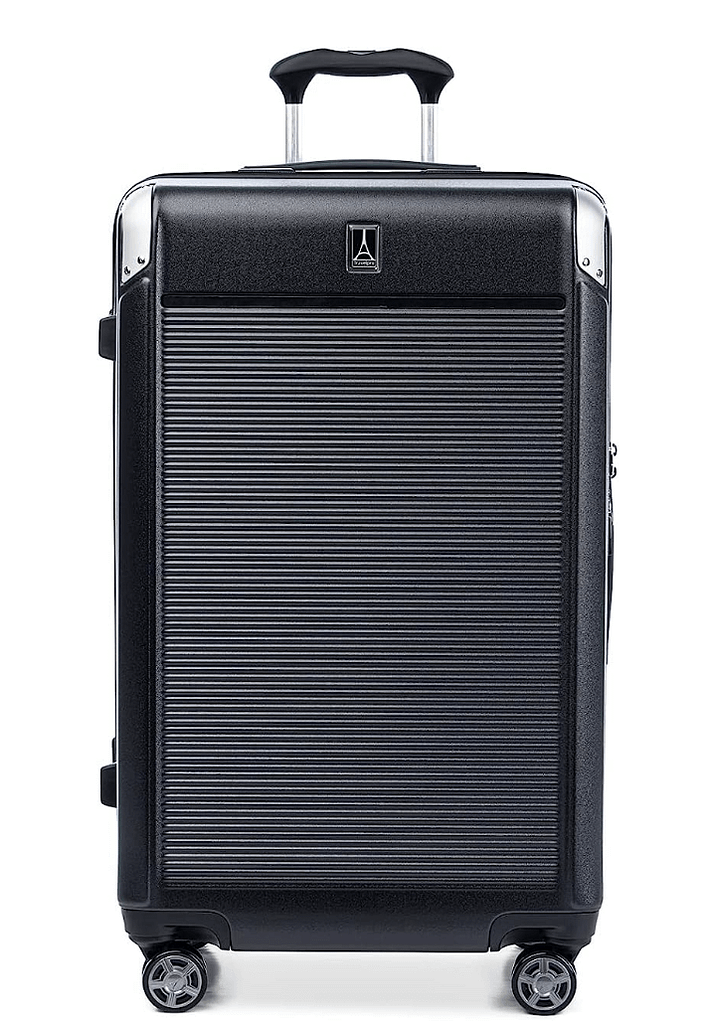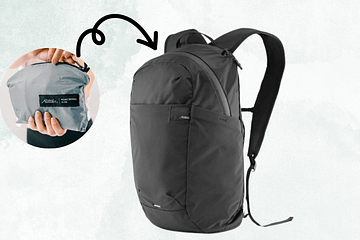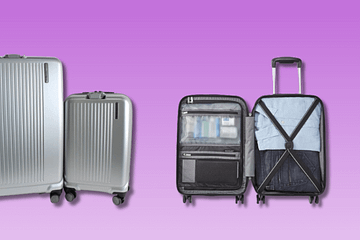When it comes to travelling, having the right luggage can make a huge difference. In this article, I will talk about 62 linear inches luggage and how you can make the most of it for your next trip. We’ll cover everything from selecting the best suitcase to packing like a pro, so you can have an amazing travel experience.
What Are Linear Inches?
Linear inches, sometimes called linear dimensions, are a way to measure how big your luggage is. To find the linear inches, you add up the length, width, and height of your bag. This total is linear inches. Airlines have rules about the maximum linear inches allowed for carry-on or checked bags to make sure they fit in the designated spaces on the plane.
When we say a suitcase is 62 linear inches, it means that if you add together the length, width, and height, the total will be 62. The specific measurements for each side can vary depending on the suitcase.
What size suitcase is 62 linear inches?
A suitcase that measures 62 linear inches refers to the total sum of its dimensions, including length, width, and height.
The size breakdown can vary depending on the specific dimensions of the suitcase.
Free Shipping on Orders $150+ at shop.samsonite
Breaking Down the Measurements
Understanding the size of your luggage is important when you travel. “Linear inches” means you add up the length, width, and height of your bag. Here’s how you can find the linear inches:
- Measure the length: Find the longest side of your luggage and measure it from end to end, including any handles or wheels.
- Measure the width: Find the shortest side of your luggage and measure it from side to side, including any handles or wheels.
- Measure the height: Measure the remaining side of your luggage from top to bottom, including any handles or wheels.
- Add it up: Take the length, width, and height measurements and add them together. The total is your luggage’s linear inches.
To make sure your luggage meets the airline’s linear inches restrictions, it’s important to calculate it correctly. Here’s a simple formula to help you calculate the linear inches of your bag:
Linear Inches = Length + Width + Height
By adding up the measurements of the length, width, and height of your luggage, you can determine its total linear inches. This calculation will help you determine if your bag fits within the airline’s size limits or if it exceeds the allowed dimensions.
For example, if your suitcase has a length of 30 inches, a width of 18 inches, and a height of 14 inches, the total linear inches would be 62 (30 + 18 + 14 = 62).

The Kenneth Cole Out of Bounds Lightweight Durable Hardshell has dimensions of 20.5 x 11.75 x 29.5 which equals 61.75 linear inches.
Understanding the Importance of Linear Inches
Understanding the importance of linear inches is essential when you’re travelling by air. Airlines have rules about the size of luggage that is allowed on their flights. It’s important to follow these rules to avoid extra charges for having oversized or overweight bags and to ensure a smooth and hassle-free journey.
By knowing the linear inches of your luggage and making sure it falls within the airline’s guidelines, you can have a stress-free travel experience.
Airline Policies and Linear Inches Restrictions
It’s important to be aware that different airlines have different policies and restrictions when it comes to linear inches. To give you a general idea, here are some common guidelines for linear inches restrictions:
- Domestic Flights: For most domestic airlines in the United States, the maximum allowed linear inches for both carry-on and checked baggage is 62 inches. However, it’s always a good idea to double-check with the airline you’ll be flying with, as there may be slight variations in their policies.
- International Flights: International flights generally have stricter linear inches restrictions compared to domestic flights. Most airlines like frontier airlines allow a maximum of 62 inches for checked baggage. However, it’s important to note that some international airlines may have specific restrictions depending on the destination or travel class.
To ensure a smooth travel experience, it’s recommended to review the specific policies of the airline you’ll be flying with regarding linear inches restrictions. This way, you can pack your luggage accordingly and avoid any potential issues or extra fees.
Benefits of 62 Linear Inches Luggage

Ample Space for Packing
One of the primary advantages of 62 linear inches luggage is the ample space it provides for packing. This size is typically considered large, making it suitable for travellers who need to carry a significant amount of clothing, accessories, or equipment. Whether you’re going on an extended trip or need extra room for souvenirs, a 62 linear inches suitcase offers the capacity you need.
Versatility and Flexibility
Another benefit of 62 linear inches luggage is its versatility and flexibility. With this size, you can pack for different types of travel, from short weekend getaways to long vacations. The extra space allows you to organize your belongings efficiently, making it easier to find what you need during your trip. Moreover, some 62 linear inches suitcases come with expandable features, providing even more room when required.
Avoiding Checked Baggage Fees
Many airlines have specific size restrictions for carry-on luggage. Typically, the maximum linear inch limit for carry-on bags is around 45-50 inches. If your suitcase exceeds these dimensions, you will likely be required to check it in, potentially incurring additional fees. However, with a 62 linear inches suitcase, you can still meet the requirements for checked baggage wh
Tips for Choosing Linear Inches Luggage
Selecting the right luggage with appropriate linear inches is key to a hassle-free travel experience.
Here are some essential tips to consider when choosing linear inches luggage:
- Research Airlines’ Policies: Before purchasing luggage, research the linear inches restrictions of the airlines you frequently travel with. This will ensure that your bag is compliant with their guidelines and save you from potential inconveniences.
- Consider Your Travel Needs: Assess the type and duration of your trips. If you’re a frequent traveller or often embark on extended journeys, investing in a durable and spacious suitcase with sufficient linear inches will be beneficial.
- Pay Attention to Bag Construction: Look for luggage made from lightweight and durable materials to maximize space and minimize weight. Ensure that the bag’s structure doesn’t compromise its linear inches capacity.
- Check for Expandable Features: Some luggage models offer expandable compartments, allowing you to increase the linear inches when needed. This flexibility can be advantageous, especially for travellers who often return home with more than they initially packed.
- Consider Weight Restrictions: While linear inches are important, it’s equally crucial to consider weight restrictions for checked baggage. Ensure that your luggage meets both linear inches and weight requirements imposed by the airlines.
Conclusion
In conclusion, understanding 62 linear inches luggage is vital for a smooth air travel experience. By being aware of the linear inches restrictions imposed by airlines, accurately calculating the linear inches of your bag, and selecting the right luggage that meets your travel needs, you can ensure a hassle-free journey without any unexpected fees or inconveniences.
Remember to always check the specific policies of the airline you’ll be flying with and invest in quality luggage that is both functional and compliant with their linear inches guidelines.
FAQ
How does Frontier measure 62 linear inches?
Frontier airlines measures 62 linear inches by adding together the dimensions of length, width, and height. It is calculated by measuring the length, width, and height of the object and summing them up. If the total measurement is equal to or less than 62 inches, it meets Frontier’s requirements.
Is a 28-inch suitcase 62 linear inches?
No, a 28-inch suitcase is not 62 linear inches always. In order to calculate the linear inches, you need to add the dimensions of length, width, and height together. Without the width and height measurements of the suitcase, it is not possible to determine the total linear inches accurately.
How big is 62 linear inches luggage?
A 62-inch suitcase can have different sizes. For example, one suitcase measuring 30x20x12 inches would add up to 62 inches.
However, not all 62-inch luggage bags have the same dimensions. The length, width, and height can vary as long as the total is 62 inches. Consider the specific dimensions of each suitcase to determine if it fits within the 62-inch limit.
This article contains affiliate links, As an Amazon Associate, I earn from qualifying purchases.




